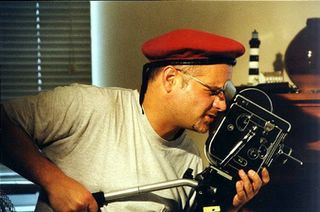You say you want a revolution: Yesterday evening I attended a workshop @ the
Apple store in SoHo NYC , where there were a series of video bloggers (vloggers) who spoke - they dubbed it
Vlog SoHo (click on the link in this post's title or to the left for a list of the speakers and links to some of their sites).
For those unfamiliar with Vlogging, this is from the event's web-site:
Videoblogging is a new form of expression centering around posting videos to a website and encouraging an audience response. It is the next step from text blogging and podcasting. A community of artists, video editors, podcasters, bloggers, and software developers has formed around this new mode of communication. We are a group of people who use videos as a normal part of our blogging."Vlogging has enormous potential for communications: from citizen journalism, to collaborative projetcs, to art and self expression, etc.
Steve Garfield was the emcee last night (this is his
bio from Wikipedia). Steve vlogged from the DNC in Boston last summer and got tons of press. I had the opportunity to speak with Steve after the workshop, and mentioned that I'd been following the vlogger scene for a few months. He was very welcoming of me (as a newbie to this growing community).
I first read about vlogging sometime early this year, and then discovered a site with video of sessions from
Vloggercon 2005, which was held Jan 22, 2005 at
NYU's Interactive Telecommunications Program (ITP). Vloggercon was the first offical face-to-face meeting of vloggers from around the country (and world).
Also at the workshop last night was
Eli Chapman, who is
Avid Technology's Manager of New Market Development. Eli was a session leader at Vloggercon 2005, and he writes a blog called
ChapmanLogic. I thanked Eli for posting an incredible video some months ago, which I've since e-mailed to many people. Click
here for Eli's post.
FYI - if anyone is interested in setting up a free Vlog,
Ryanne Hodson and
Michael Verdi have created
FreeVlog, a site with how-to tutorials.



